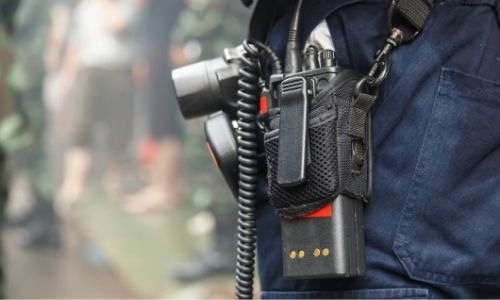 Two-way radios are essential in the workforce but are easy to forget about unless you use them every day. Learn about the parts of the humble two-way radio!
Two-way radios are essential in the workforce but are easy to forget about unless you use them every day. Learn about the parts of the humble two-way radio!
Though two-way radio technology has changed throughout the years, many elements remain the same. These devices are an essential part of many emergency kits and toolboxes across a variety of industries, from first responders to schools. If an industry or type of business requires instant communication on a local network, you'll likely see a two-way radio in their hand. By looking at some of the different parts of the two-way radio, you can see why this piece of technology has been a staple in communications for decades.
The Antenna
At the top of the two-way radio is the antenna. Antennas can have several different appearances, but for the most part, they're a plastic or metal rod or nub at the top of the device. This is the part of the radio that takes in radio waves and transforms them into electrical signals, which then turn into audio. A damaged antenna can affect the device's range, audio quality, and clarity.
The Display
While some two-way radios don't include display screens, many include digital monitors that display the time, current frequency, and battery life. More advanced iterations of two-way radios include applications that aren't too different from what you'd see on a smartphone. These apps allow employees and managers to handle timecards, alert the team to an emergency, or even text. The complexity often varies with the price of the radio, and the applications may require extra fees.
The Speaker and Microphone
Audio output comes out of a small speaker on the front of the device. The speaker may be at the top or bottom of the front side, depending on the design of the radio. When taking care of the two-way radio, make sure to avoid getting dust or debris inside the speaker to prevent audio clarity issues.
The two-way radio microphone is usually in about the same location as the speaker and may have the abbreviation "MIC" to indicate where it is. However, most two-way radio users hook up their headsets that have both headphones and a microphone through the headset jack along the edge. By pressing the radio's push-to-talk button, it instantly transmits your voice to others on the same channel.
The Battery
No two-way radio can function without its power source. Every two-way radio comes with a battery that will last the entire day. However, without proper two-way radio battery maintenance, the lifespan will decrease. Taking care of the battery according to the manufacturer's instructions can slow down the aging process, though most batteries require replacement after two years or when they have 60 percent of their original effectiveness.
The Tuning Knob or Buttons
The final of the different parts of a two-way radio for you to know is the knobs or buttons you'll use to adjust the channel and volume. Different channels allow for multiple teams to communicate using the same network without talking over each other. A volume slider allows you to adjust how loud the audio output is. Either of these utilities may be knobs, wheels, or buttons on the face of the device.